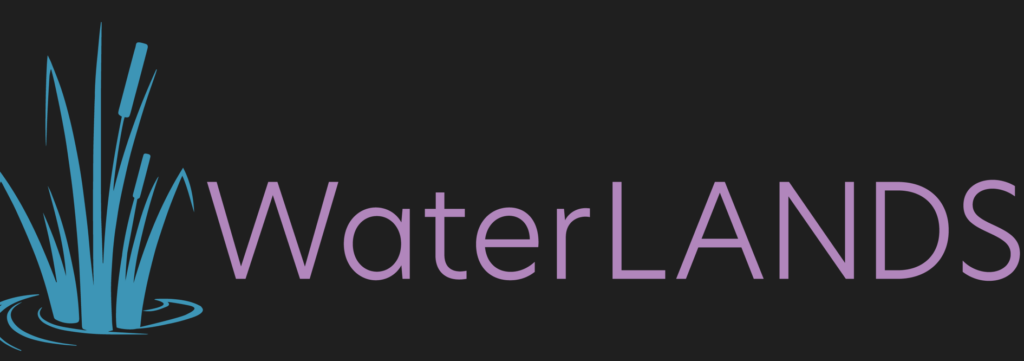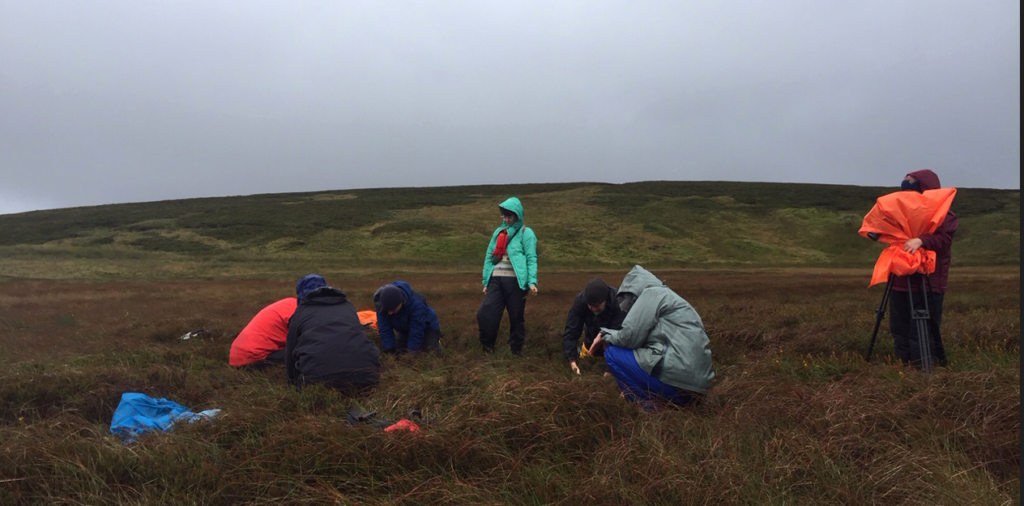

Two artists have been employed as part of an ambitious European project to help share the journey of restoring peatlands at a site covering large areas in the north of England.
Laura Harrington and Fiona MacDonald (Feral Practice) were selected from around 200 applicants to work with a team leading the Great North Bog initiative as part of WaterLANDS – which aims to restore wetlands damaged by human activity.
Artists were recruited to work with restoration teams at six Action Sites throughout Europe. Their role is to reflect the ongoing restoration at the site as well as the social processes involved by interacting with relevant stakeholders and communities.
The Yorkshire Integrated Catchment Solutions Programme (iCASP), run by water@leeds based at University of Leeds, is a key research partner in the European project which will support communities involved in the restoration of peatlands. The project builds on the collaborative iCASP approach, initially funded through the Natural Environment Research Council.
Laura Harrington and Feral Practice have a wealth of experience developing interdisciplinary research and collaborative art projects in partnership with ecological and cultural conservation initiatives including in UK, Brazil, Italy and Finland. They have worked with the North Pennines Area of Outstanding Natural Beauty, Natural England, Durham University, Environment Agency, Scarborough Museums and Galleries, Tate St Ives, Goethe Insitut, Kent County Council, the British Council, MIMA and BALTIC. They both recently completed their doctorates in Fine Art.
In 2019, the artists worked together on ‘Fieldworking’- a project and artists’ camp initiated by Laura at Moor House, Upper Teesdale National Nature Reserve. This involved bringing together artists, an ecologist and filmmakers to highlight blanket bog habitat interspecies relations and artists’ field-based activities.
Laura has worked for 12 years in the north east uplands, peatlands and rivers, embedding what she calls upstream consciousness at the core of her practice. Her recent projects use a variety of methods and media, including filmmaking, audio visual installation, public engagement, drawing, textiles, fieldwork and listening.
Fiona works with humans and nonhumans to create art projects that develop ethical and imaginative connections across species boundaries. Her recent projects combine audio-visual technologies – field sound, spoken word, video, virtual reality – with sculptural installation and participatory performance.
Laura said: “We are delighted to be chosen to work on WaterLANDS and wth all the habitats and people it encompasses.
“Our aim is to build a collaborative research practice centred on the Great North Bog that uses our shared experience and expertise to inform new thinking, participation and outcomes. Our methodologies will be inspired directly by the beings, processes and materials of these landscapes and their restoration.”
Fiona added: “Our residency aims to generate new stories and relationships between bodies, systems, flows and elements over the four years, echoing the complex, heterogeneous and porous nature of peatlands slowly accumulating over time.
“While open-ended, we anticipate that our final outcomes will bring immersive and diverse soundscapes, sculpture and visuals together.”
Richard Grayson, WaterLANDS Action Site Coordinator and iCASP Impact Translation Fellow, said: “We were overwhelmed by both the number of talented applicants and the high standard of applications we received for this unique project.
“However, Fiona and Laura stood out as being exceptional, with the artistic and community engagement experience we were looking for to use their imaginative approach to reflect on the journey of this particular site.
“Through whatever they choose to create, we hope it will increase awareness of the importance of restoration and help to share knowledge across the project and beyond.”
Professor Joseph Holden, director of iCASP and water@leeds, said: “Peatlands have a vital role in our environment from storing carbon, improving water quality to reducing flood risk and supporting biodiversity – and we must do all we can to protect and enhance them.
“Restoration brings cultural renewal. Through this amazing project we want art to be an integral part of creating and reflecting that renewal.
“We see art and science as complementary disciplines, both driven by curiosity and enquiry. They can provide different perspectives on restoration and give rise to unique collaborations.”
The Great North Bog area covers upland peatlands in Yorkshire as well as in Derbyshire, Lancashire, Durham, Northumberland and Cumbria.
The artists plan to consider WaterLANDS and the Great North Bog from three perspectives.
- Scalar – considering the global, regional, local and micro contexts.
- Turn attention to ‘above and below’ for example, how the living surfaces of sphagnum and other plants and creatures slowly become peat or understanding how certain plants – such as bog rosemary – lives and grows can help us to understand the extent and hostility of these environments.
- Reflect the connections between human and nonhuman as inextricably enmeshed – by highlighting shared struggles and the intention to learn and heal across species boundaries.
The Great North Bog represents around 92 percent of the upland peat in England and includes four National Parks, three Areas of Outstanding Natural Beauty and the proposed South Pennines Park. The site represents a significant opportunity to implement the peatland restoration objectives in the Government’s 25 Year Environment Plan.
You can read more about the other artists that have been chosen to work at action sites throughout Europe.
Notes for editors
About WaterLANDS
- WaterLANDS (Water-based solutions for carbon storage, people and wilderness) is a €23.6 million, five year EU Green Deal funded project that aims to restore wetland sites across Europe. The project will use lessons learned from ongoing and existing restoration at 15 ‘Knowledge Sites’ across Europe to inform hands-on peatland restoration at six ‘Action Sites’ in the UK, Bulgaria, Estonia, Ireland, Italy and the Netherlands.
It is led by University College Dublin (UCD), Ireland and brings together 31 other organisations from research, industry, government and non-profit sectors in 14 European countries.
Europe has already lost up to 90% of its original wetlands, resulting in massive biodiversity loss, water and food shortages, devastating floods and fires, coastal subsidence and erosion. The largescale, integrated approach developed in WaterLANDS will address these challenges to ensure the resilience and health of both wetland habitats and the communities who rely on them. Project website www.waterlands.eu
- The Yorkshire Integrated Catchment Solutions Programme (iCASP) is a six-year programme based at University of Leeds funded by the Natural Environment Research Council. It uses existing environmental science to address catchment management problems. Projects are co-designed by academics from Leeds, Sheffield and York
Visit https://icasp.org.uk/ or for more details about iCASP Peat projects https://icasp.org.uk/projects-2-2/
About The Great North Bog Visit https://greatnorthbog.org.uk/


